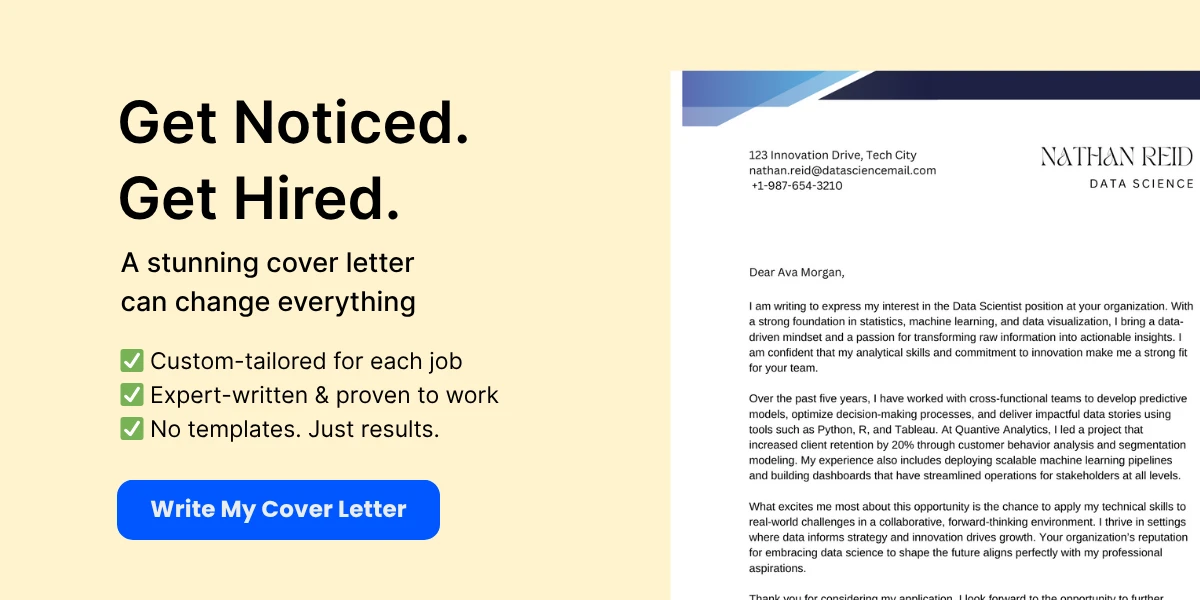In the fast-paced world of sales and marketing, cold calling remains a powerful yet often misunderstood technique. Defined as the process of reaching out to potential customers who have had no prior interaction with your business, cold calling can be a tough task for many. However, when executed effectively, it can open doors to new opportunities, foster relationships, and drive significant revenue growth.
This article delves into the intricacies of cold calling, exploring how it works and why it continues to be a vital strategy in the sales arsenal. We will break down the essential components of a successful cold call, share real-life examples that illustrate its effectiveness, and provide insights into best practices that can enhance your approach. Whether you are a seasoned sales professional or a newcomer looking to expand your skill set, this comprehensive guide will equip you with the knowledge and tools needed to master the art of cold calling.
Join us as we uncover the nuances of this age-old technique, empowering you to transform your cold calling efforts into a rewarding experience that not only meets your sales goals but also builds lasting connections with potential clients.
Definition of Cold Calling
What is Cold Calling?
Cold calling is a sales technique where a salesperson contacts potential customers who have not previously expressed interest in the product or service being offered. This method is often used in various industries, including real estate, insurance, and technology, to generate leads and create new business opportunities. The term “cold” refers to the lack of prior relationship or interaction between the salesperson and the prospect, making it a challenging yet potentially rewarding approach.
Typically, cold calls are made over the phone, but they can also occur through other channels such as email or social media. The primary goal of cold calling is to initiate a conversation, qualify the lead, and ultimately convert the prospect into a customer. Successful cold calling requires a combination of effective communication skills, persistence, and a well-defined strategy.


Historical Background of Cold Calling
The practice of cold calling has its roots in the early 20th century, coinciding with the rise of telecommunication technologies. As the telephone became more accessible, businesses began to recognize its potential as a tool for reaching out to customers directly. Initially, cold calling was primarily used by door-to-door salespeople who would often follow up with phone calls to prospects they had met in person.
In the 1950s and 1960s, the advent of more sophisticated marketing techniques and the expansion of consumer goods led to an increase in cold calling as a sales strategy. Companies began to employ dedicated sales teams to reach out to potential customers, often using lists of leads generated from various sources, such as trade shows, networking events, and purchased databases.
As technology continued to evolve, so did the methods of cold calling. The introduction of automated dialing systems in the 1980s allowed sales teams to increase their call volume significantly. However, this also led to a rise in complaints from consumers, prompting regulatory changes that aimed to protect individuals from unsolicited calls. The National Do Not Call Registry, established in the United States in 2003, is one such measure that has impacted the cold calling landscape.
Cold Calling vs. Warm Calling
Understanding the difference between cold calling and warm calling is crucial for sales professionals. While both techniques involve reaching out to potential customers, the key distinction lies in the prior relationship or interaction between the salesperson and the prospect.
Cold Calling: As previously mentioned, cold calling involves contacting individuals who have no prior knowledge of the salesperson or their offerings. This approach often requires a more persuasive pitch, as the prospect may be unfamiliar with the product or service. Cold calling can be seen as a numbers game, where the salesperson must make a high volume of calls to achieve a few successful conversions.
Warm Calling: In contrast, warm calling refers to reaching out to prospects who have shown some level of interest in the product or service. This could include individuals who have previously engaged with the brand, such as those who have filled out a contact form, attended a webinar, or downloaded a resource. Warm calls typically yield higher success rates, as the prospect is already somewhat familiar with the offering and may be more receptive to the conversation.


For example, a salesperson who follows up with a lead generated from a recent marketing campaign is engaging in warm calling. They can reference the specific campaign and tailor their pitch based on the prospect’s previous interactions, making the conversation more relevant and personalized.
Common Misconceptions About Cold Calling
Despite its long-standing presence in the sales industry, cold calling is often surrounded by misconceptions that can hinder its effectiveness. Here are some of the most common myths:
- Cold Calling is Dead: Many believe that cold calling has become obsolete due to the rise of digital marketing and social media. However, while the landscape has changed, cold calling remains a viable strategy for many businesses. In fact, when executed correctly, it can complement other marketing efforts and lead to valuable conversations.
- Cold Calling is Just a Numbers Game: While it’s true that making a high volume of calls can increase the chances of success, effective cold calling is not solely about quantity. Quality matters just as much. A well-researched and personalized approach can yield better results than a generic pitch delivered to numerous prospects.
- All Cold Calls are Annoying: Many people associate cold calls with intrusive sales tactics. However, when done respectfully and with genuine intent, cold calls can provide value to the prospect. A skilled salesperson can identify the prospect’s pain points and offer solutions that genuinely address their needs.
- Cold Calling is Only for Salespeople: While sales teams are the primary users of cold calling, professionals in various roles can benefit from this technique. For instance, recruiters often use cold calling to reach out to potential candidates, and business development representatives may use it to establish partnerships.
- Cold Calling is Easy: Many people underestimate the challenges associated with cold calling. It requires resilience, adaptability, and strong communication skills. Rejection is a common part of the process, and successful cold callers must be able to handle it gracefully and learn from each interaction.
By dispelling these misconceptions, sales professionals can approach cold calling with a more informed and strategic mindset, ultimately leading to better outcomes.
How Cold Calling Works
The Cold Calling Process
Cold calling is a sales technique that involves contacting potential customers who have not previously expressed interest in the product or service being offered. The process typically follows several key steps:
- Research and Preparation: Before making calls, sales representatives should conduct thorough research to identify potential leads. This includes understanding the target market, gathering information about the prospects, and determining the best approach for each call.
- Creating a Call List: Once the research is complete, sales teams compile a list of prospects. This list can be generated from various sources, including online databases, social media platforms, and industry directories.
- Making the Call: The actual cold call begins with the salesperson introducing themselves and their company. The goal is to engage the prospect quickly and capture their interest.
- Qualifying the Prospect: During the conversation, the salesperson should ask questions to determine if the prospect is a good fit for the product or service. This step is crucial for identifying potential leads that are worth pursuing further.
- Presenting the Offer: If the prospect shows interest, the salesperson presents the product or service, highlighting its benefits and how it can solve the prospect’s problems.
- Handling Objections: Prospects may have concerns or objections. A skilled salesperson should be prepared to address these objections effectively, providing reassurance and additional information as needed.
- Closing the Sale: If the conversation is going well, the salesperson will attempt to close the sale by asking for a commitment or scheduling a follow-up meeting.
- Follow-Up: Regardless of the outcome, following up with prospects is essential. This can involve sending a thank-you email, providing additional information, or checking in at a later date.
Tools and Technologies for Cold Calling
In today’s digital age, various tools and technologies can enhance the cold calling process, making it more efficient and effective. Here are some essential tools:


- Customer Relationship Management (CRM) Software: CRMs like Salesforce, HubSpot, and Zoho help sales teams manage leads, track interactions, and analyze customer data. This software allows sales representatives to keep detailed records of their calls and follow-ups, ensuring no lead falls through the cracks.
- Auto-Dialers: Auto-dialers automate the calling process, dialing numbers for sales representatives and connecting them only when a prospect answers. This technology can significantly increase the number of calls made in a day.
- Call Recording Software: Recording calls can provide valuable insights into sales techniques and customer responses. Sales teams can review these recordings to identify areas for improvement and refine their approach.
- Lead Generation Tools: Tools like LinkedIn Sales Navigator and ZoomInfo help sales teams identify and gather information about potential leads, making it easier to create targeted call lists.
- VoIP Services: Voice over Internet Protocol (VoIP) services like RingCentral and Skype allow sales teams to make calls over the internet, often at a lower cost than traditional phone services. These services often come with additional features like call analytics and integration with CRM systems.
The Role of Scripts in Cold Calling
Scripts play a crucial role in cold calling, providing a structured framework for sales representatives to follow during their conversations. A well-crafted script can help ensure that key points are covered and that the conversation flows smoothly. Here are some important aspects of using scripts:
- Consistency: Scripts help maintain consistency across calls, ensuring that all sales representatives convey the same message and brand voice. This consistency is vital for building trust with prospects.
- Guidance: For new sales representatives, scripts provide guidance on how to handle various scenarios, including common objections and questions. This can boost their confidence and improve their performance.
- Flexibility: While scripts are essential, they should not be overly rigid. Successful sales representatives often adapt their scripts based on the flow of the conversation and the prospect’s responses. This flexibility allows for a more natural interaction.
- Testing and Optimization: Sales teams should regularly review and update their scripts based on feedback and performance metrics. This continuous improvement process helps identify what works best and enhances overall effectiveness.
Legal and Ethical Considerations
Cold calling is subject to various legal and ethical considerations that sales teams must adhere to in order to maintain compliance and uphold their company’s reputation. Here are some key points to consider:
- Do Not Call Registry: In many countries, including the United States, there are regulations that prohibit calling numbers listed on the National Do Not Call Registry. Sales teams must ensure they check their call lists against this registry to avoid legal repercussions.
- Consent and Opt-Out Options: It’s essential to respect the wishes of prospects who express a desire not to be contacted. Sales representatives should provide an easy way for prospects to opt out of future communications.
- Truthful Representation: Sales representatives must accurately represent themselves and their products. Misleading information can lead to legal issues and damage the company’s reputation.
- Privacy Regulations: Compliance with privacy regulations, such as the General Data Protection Regulation (GDPR) in Europe, is crucial. Sales teams should be aware of how they collect, store, and use customer data.
Measuring Success in Cold Calling
To determine the effectiveness of cold calling efforts, sales teams must establish key performance indicators (KPIs) and regularly analyze their results. Here are some common metrics used to measure success:
- Call Volume: Tracking the number of calls made within a specific timeframe helps assess the productivity of the sales team. However, it’s important to balance quantity with quality.
- Conversion Rate: This metric measures the percentage of calls that result in a successful sale or appointment. A higher conversion rate indicates effective sales techniques and a well-targeted call list.
- Average Call Duration: Monitoring the average length of calls can provide insights into the quality of conversations. Longer calls may indicate more engaged prospects, while shorter calls could suggest a lack of interest.
- Follow-Up Rate: Tracking how many prospects require follow-up calls can help assess the effectiveness of initial conversations. A high follow-up rate may indicate that prospects are interested but need more information before making a decision.
- Customer Feedback: Gathering feedback from prospects, whether they convert or not, can provide valuable insights into the cold calling process. Understanding their perceptions can help refine sales strategies.
Preparing for a Cold Call
Cold calling can be a tough task, but with the right preparation, it can also be a highly effective way to generate leads and close sales. This section will delve into the essential steps you need to take to prepare for a successful cold call, including researching your prospects, crafting an effective script, setting goals and objectives, building confidence, and timing your calls for maximum impact.
Researching Your Prospects
Before you pick up the phone, it’s crucial to know who you’re calling. Researching your prospects is the first step in preparing for a cold call. This involves gathering information about the individual or company you are targeting. Here are some key areas to focus on:
- Company Background: Understand the company’s mission, values, and recent news. This information can help you tailor your pitch to align with their goals.
- Industry Trends: Familiarize yourself with the industry in which your prospect operates. Knowing the challenges and opportunities they face can help you position your product or service as a solution.
- Decision-Maker Identification: Identify who the decision-makers are within the organization. LinkedIn and company websites can be valuable resources for this information.
- Previous Interactions: If you have any prior interactions with the prospect or their company, review those notes. Understanding past conversations can provide context and help you build rapport.
By conducting thorough research, you can create a more personalized approach that resonates with your prospect, increasing the likelihood of a positive response.
Crafting an Effective Script
While it’s important to sound natural during a cold call, having a well-crafted script can serve as a valuable guide. A good script should include the following elements:


- Introduction: Start with a friendly greeting and introduce yourself and your company. Keep it brief and to the point.
- Value Proposition: Clearly articulate the value of your product or service. Explain how it can solve a problem or meet a need for the prospect.
- Engagement Questions: Prepare open-ended questions that encourage dialogue. This not only helps you gather information but also keeps the prospect engaged.
- Handling Objections: Anticipate common objections and prepare responses. This will help you stay composed and confident during the call.
- Call to Action: End with a clear call to action, whether it’s scheduling a follow-up meeting, sending additional information, or closing a sale.
While having a script is essential, remember to be flexible. Listen actively to your prospect and adjust your approach based on their responses. Authenticity is key in building trust.
Setting Goals and Objectives
Before making a cold call, it’s important to set clear goals and objectives. This will help you stay focused and measure your success. Consider the following:
- Specific Goals: Define what you want to achieve with each call. This could be scheduling a meeting, qualifying a lead, or closing a sale.
- Measurable Outcomes: Establish metrics to evaluate your performance. For example, track the number of calls made, appointments set, or sales closed.
- Timeframe: Set a timeframe for achieving your goals. This could be daily, weekly, or monthly, depending on your sales strategy.
- Adjustments: Be prepared to adjust your goals based on your results. If you’re not meeting your targets, analyze your approach and make necessary changes.
Having clear goals will not only keep you motivated but also provide a sense of direction during your cold calling efforts.
Building Confidence and Overcoming Fear
Cold calling can be intimidating, especially for those new to sales. Building confidence and overcoming fear is essential for success. Here are some strategies to help you:
- Practice: Rehearse your script and practice with colleagues or friends. The more familiar you are with your pitch, the more confident you will feel.
- Positive Mindset: Cultivate a positive mindset by focusing on your strengths and past successes. Remind yourself that rejection is a natural part of the process.
- Visualization: Visualize successful calls before you make them. Imagine the prospect responding positively and engaging in a productive conversation.
- Start Small: Begin with less intimidating calls, such as reaching out to warm leads or referrals. Gradually work your way up to more challenging prospects.
- Seek Feedback: After each call, reflect on what went well and what could be improved. Seeking feedback from peers can also provide valuable insights.
By actively working on your confidence, you’ll find that cold calling becomes less daunting and more manageable over time.
Timing Your Calls for Maximum Impact
The timing of your cold calls can significantly impact your success rate. Here are some tips for optimizing your call timing:


- Best Days to Call: Research suggests that Tuesday through Thursday are generally the best days for cold calling. Mondays can be hectic as people catch up on work, while Fridays may find prospects winding down for the weekend.
- Optimal Times: Aim to call during mid-morning (10 AM – 11 AM) or mid-afternoon (2 PM – 4 PM). These times often yield higher response rates as prospects are more likely to be at their desks and receptive to calls.
- Avoid Lunchtime: Steer clear of calling during lunch hours (12 PM – 1 PM) when prospects are likely to be away from their phones.
- Time Zone Considerations: If you’re calling prospects in different time zones, be mindful of their local time. Use tools to help you keep track of time differences.
- Follow-Up Timing: If you’ve previously contacted a prospect, consider the timing of your follow-up calls. Give them enough time to consider your previous conversation, but not so much that they forget about you.
By strategically timing your calls, you can increase the chances of reaching your prospects when they are most available and open to conversation.
Preparing for a cold call involves thorough research, crafting an effective script, setting clear goals, building confidence, and timing your calls strategically. By following these steps, you can enhance your cold calling efforts and improve your chances of success in generating leads and closing sales.
Techniques and Strategies
Opening the Call: First Impressions Matter
The opening of a cold call is crucial; it sets the tone for the entire conversation. First impressions are formed within the first few seconds, and as a caller, you need to capture the prospect’s attention immediately. Start with a friendly greeting and introduce yourself and your company succinctly. For example:
“Hi, this is Jane Doe from XYZ Solutions. How are you today?”
Using the prospect’s name can also create a personal touch. After your introduction, it’s beneficial to state the purpose of your call quickly. This helps the prospect understand why you are reaching out and can pique their interest. For instance:
“I’m calling because we’ve helped companies like yours increase their sales by 30% in just six months, and I believe we can do the same for you.”

Remember to maintain a positive tone and be enthusiastic about what you’re offering. This energy can be contagious and may encourage the prospect to engage with you further.
Handling Objections and Rejections
Objections are a natural part of cold calling. Prospects may express concerns about price, timing, or the relevance of your product or service. The key to handling objections is to listen actively and respond thoughtfully. Here are some common objections and strategies to address them:
- “I don’t have time right now.”
Response: “I completely understand. Would it be possible to schedule a quick call at a more convenient time? I promise to keep it brief.”
- “We’re happy with our current provider.”
Response: “That’s great to hear! May I ask what you like most about your current provider? I’d love to share how we differ and potentially offer additional value.”
- “I’m not interested.”
Response: “I appreciate your honesty. If you don’t mind me asking, what specifically makes you feel that way? Your feedback could help me improve.”
By acknowledging the prospect’s concerns and providing thoughtful responses, you can turn objections into opportunities for further discussion. Remember, persistence is key, but it’s essential to know when to gracefully exit the conversation if the prospect remains uninterested.


Building Rapport and Trust
Building rapport is essential in cold calling, as it fosters trust and makes the prospect more receptive to your message. Here are some effective strategies to build rapport:
- Personalization: Use information you have about the prospect to tailor your conversation. Mentioning a recent achievement or a common connection can create a sense of familiarity.
- Active Listening: Show genuine interest in what the prospect has to say. Paraphrase their concerns and ask follow-up questions to demonstrate that you are engaged in the conversation.
- Empathy: Acknowledge the prospect’s feelings and challenges. For example, if they express frustration with their current solution, validate their feelings and share how your product can alleviate those issues.
For instance, if you’re calling a marketing manager who recently launched a new campaign, you might say:
“I saw your recent campaign on social media; it looks fantastic! How has the response been so far?”
This approach not only shows that you’ve done your homework but also opens the door for a more engaging conversation.
Closing the Call: Securing the Next Step
Closing a cold call is often the most challenging part, but it’s also the most critical. The goal is to secure a commitment for the next step, whether that’s scheduling a follow-up call, setting up a meeting, or sending additional information. Here are some effective closing techniques:
- Assumptive Close: Act as if the prospect is already interested. For example, “When would be a good time for us to discuss this further?”
- Alternative Close: Offer two options to make it easier for the prospect to say yes. For instance, “Would you prefer to meet this Thursday or next Tuesday?”
- Direct Close: Be straightforward and ask for what you want. “Based on our conversation, I believe our solution could really benefit you. Can we schedule a time to discuss this in more detail?”
Regardless of the technique you choose, ensure that you are clear about the next steps and confirm the details before ending the call. This clarity helps prevent misunderstandings and keeps the momentum going.
Follow-Up Strategies
Following up after a cold call is essential for maintaining momentum and nurturing the relationship. Here are some effective follow-up strategies:
- Send a Thank-You Email: After the call, send a brief email thanking the prospect for their time. This reinforces your professionalism and keeps the lines of communication open.
- Provide Additional Value: If you discussed specific pain points during the call, follow up with resources that address those issues. This could be a case study, a white paper, or a relevant article.
- Schedule a Follow-Up Call: If the prospect expressed interest, propose a specific date and time for a follow-up call. This shows initiative and keeps the conversation moving forward.
For example, you might say in your follow-up email:
“Hi [Prospect’s Name], thank you for taking the time to speak with me today. I enjoyed our conversation about [specific topic]. As promised, I’ve attached a case study that highlights how we helped a similar company achieve [specific result]. I’d love to discuss this further. Would you be available for a quick call next week?”
By implementing these follow-up strategies, you can keep the prospect engaged and increase the likelihood of converting them into a customer.
Challenges and Solutions
Common Challenges in Cold Calling
Cold calling, while a powerful sales technique, is fraught with challenges that can deter even the most seasoned sales professionals. Understanding these challenges is crucial for developing effective strategies to overcome them. Here are some of the most common hurdles faced during cold calling:
- Rejection: One of the most significant challenges in cold calling is the high rate of rejection. Sales representatives often face numerous “no’s” before encountering a “yes.” This can be demoralizing and may lead to decreased motivation over time.
- Gatekeepers: Many decision-makers are shielded by gatekeepers—assistants or receptionists who screen calls. Getting past these gatekeepers can be a tough task, as they are trained to protect their bosses’ time.
- Time Constraints: In today’s fast-paced business environment, many prospects are busy and may not have time for a cold call. This can lead to rushed conversations or hang-ups, making it difficult to establish rapport.
- Information Overload: Prospects are often inundated with calls from various salespeople, leading to a general sense of fatigue towards unsolicited calls. This can make it challenging to capture their attention.
- Compliance Issues: Cold calling is subject to various regulations, such as the Telephone Consumer Protection Act (TCPA) in the U.S. Sales professionals must navigate these legalities to avoid penalties.
- Inadequate Preparation: A lack of research on the prospect can lead to ineffective calls. Sales representatives who do not understand their audience may struggle to communicate value effectively.
Solutions and Best Practices
While the challenges of cold calling can be daunting, there are several strategies and best practices that can help sales professionals improve their success rates:
- Embrace Rejection: Accept that rejection is part of the process. Developing a resilient mindset can help salespeople stay motivated. Setting realistic goals, such as aiming for a certain number of calls per day, can also help maintain focus.
- Build Relationships with Gatekeepers: Treat gatekeepers with respect and kindness. Building rapport with them can increase the chances of getting through to decision-makers. A friendly approach can turn gatekeepers into allies.
- Time Your Calls Wisely: Research suggests that certain times of day yield better results for cold calls. Early mornings or late afternoons are often less busy for prospects. Experimenting with different times can help identify the best windows for outreach.
- Craft a Compelling Value Proposition: Clearly articulate the value of your product or service. Tailor your pitch to address the specific needs and pain points of the prospect. A well-prepared script can help maintain focus during the call.
- Utilize Technology: Leverage CRM systems and sales automation tools to streamline the cold calling process. These tools can help track interactions, schedule follow-ups, and manage leads more effectively.
- Practice Active Listening: Engage prospects by asking open-ended questions and actively listening to their responses. This not only helps build rapport but also provides valuable insights into their needs and concerns.
Adapting to Changing Market Conditions
The landscape of sales and marketing is constantly evolving, and cold calling is no exception. To remain effective, sales professionals must adapt to changing market conditions:
- Embrace Digital Transformation: The rise of digital communication has changed how prospects prefer to interact. Incorporating digital tools, such as email and social media, into the cold calling strategy can enhance outreach efforts and provide multiple touchpoints.
- Stay Informed: Keeping abreast of industry trends and changes in consumer behavior is essential. Understanding the market landscape can help sales professionals tailor their approach and stay relevant.
- Personalization is Key: In an age where consumers expect personalized experiences, cold calls should reflect this trend. Researching prospects and customizing pitches can significantly improve engagement rates.
- Leverage Data Analytics: Utilizing data analytics can provide insights into customer behavior and preferences. This information can inform cold calling strategies, helping sales teams target the right prospects with the right messages.
The Future of Cold Calling
As technology continues to advance, the future of cold calling is likely to evolve in several ways:
- Integration with AI: Artificial intelligence is poised to play a significant role in cold calling. AI-driven tools can analyze data to identify potential leads, automate follow-ups, and even assist in crafting personalized messages.
- Increased Focus on Multi-Channel Outreach: Cold calling will likely become part of a broader multi-channel strategy. Combining cold calls with email, social media, and other forms of outreach can create a more comprehensive approach to lead generation.
- Enhanced Training Programs: As the sales landscape changes, so too will the training programs for sales professionals. Emphasizing skills such as emotional intelligence, adaptability, and digital literacy will be crucial for success in cold calling.
- Greater Emphasis on Compliance: With increasing regulations surrounding telemarketing, sales teams will need to prioritize compliance training. Understanding legal requirements will be essential to avoid penalties and maintain a positive reputation.
Integrating Cold Calling with Other Sales Strategies
To maximize effectiveness, cold calling should not exist in a vacuum. Integrating it with other sales strategies can enhance overall performance:
- Lead Generation Campaigns: Cold calling can be part of a broader lead generation campaign that includes content marketing, social media outreach, and email marketing. This multi-faceted approach can help warm up leads before making a call.
- Follow-Up Strategies: After a cold call, it’s essential to have a follow-up strategy in place. Sending a personalized email or connecting on LinkedIn can reinforce the conversation and keep the prospect engaged.
- Collaboration with Marketing: Sales and marketing teams should work closely to align messaging and target the right audience. Sharing insights from cold calls can help marketing refine their strategies and create more effective campaigns.
- Utilizing Customer Feedback: Gathering feedback from prospects during cold calls can provide valuable insights into customer needs and preferences. This information can inform product development and marketing strategies.
Tools and Resources
Recommended Cold Calling Software
In the fast-paced world of sales, having the right tools can make all the difference. Cold calling software can streamline your process, enhance productivity, and improve your success rate. Here are some of the most recommended cold calling software options:
- Salesforce: A leading customer relationship management (CRM) platform that offers robust cold calling features, including call logging, lead tracking, and integration with various communication tools.
- HubSpot Sales: This tool provides a suite of features for cold callers, including email tracking, call scheduling, and a built-in dialer that allows you to make calls directly from the platform.
- Aircall: A cloud-based phone system designed for sales teams, Aircall integrates seamlessly with CRMs and offers features like call recording, analytics, and team collaboration tools.
- Outreach: A sales engagement platform that helps sales teams manage their outreach efforts, Outreach provides tools for tracking calls, automating follow-ups, and analyzing performance metrics.
- RingCentral: This VoIP service offers a comprehensive calling solution with features like call forwarding, voicemail transcription, and video conferencing, making it ideal for remote sales teams.
Books and Articles on Cold Calling
For those looking to deepen their understanding of cold calling, numerous books and articles provide valuable insights, strategies, and techniques. Here are some highly recommended reads:
- “The Ultimate Sales Machine” by Chet Holmes: This book covers various aspects of sales, including effective cold calling strategies that can help you stand out in a crowded market.
- “Fanatical Prospecting” by Jeb Blount: A must-read for anyone in sales, this book emphasizes the importance of prospecting and provides actionable tips for successful cold calling.
- “New Sales. Simplified.” by Mike Weinberg: This book offers a straightforward approach to building a sales pipeline, with a focus on the critical role of cold calling in the process.
- Articles from HubSpot: HubSpot’s blog features a wealth of articles on cold calling techniques, best practices, and tips for overcoming common challenges.
- Sales Hacker: This online publication offers a variety of articles and resources focused on modern sales strategies, including cold calling tactics and success stories.
Online Courses and Training Programs
Investing in training can significantly enhance your cold calling skills. Here are some online courses and training programs that can help you master the art of cold calling:
- LinkedIn Learning: Offers a variety of courses on sales techniques, including cold calling strategies, objection handling, and effective communication skills.
- Coursera: Provides access to courses from top universities and institutions, including sales training programs that cover cold calling and prospecting.
- Udemy: Features numerous courses specifically focused on cold calling, ranging from beginner to advanced levels, allowing you to choose the right fit for your needs.
- Sales Training by Grant Cardone: Grant Cardone offers a comprehensive sales training program that includes modules on cold calling, closing deals, and building rapport with prospects.
- Skillshare: This platform has various classes on sales techniques, including cold calling, where you can learn from experienced professionals in the field.
Communities and Forums for Cold Callers
Connecting with other sales professionals can provide valuable insights and support. Here are some online communities and forums where cold callers can share experiences, ask questions, and learn from one another:
- Reddit – r/sales: A vibrant community where sales professionals discuss various topics, including cold calling strategies, challenges, and success stories.
- LinkedIn Groups: There are numerous LinkedIn groups dedicated to sales professionals, where members share tips, resources, and advice on cold calling and other sales techniques.
- Sales Hacker Community: An online community for sales professionals that offers forums, webinars, and resources focused on modern sales strategies, including cold calling.
- Quora: A question-and-answer platform where you can find discussions on cold calling, ask questions, and receive answers from experienced sales professionals.
- Facebook Groups: There are several Facebook groups dedicated to sales and cold calling, where members share tips, resources, and support.
Templates and Checklists
Having a structured approach to cold calling can improve your efficiency and effectiveness. Here are some templates and checklists that can help you stay organized and focused during your calls:
- Cold Calling Script Template: A customizable script that outlines key points to cover during your call, including an introduction, value proposition, and closing questions.
- Call Preparation Checklist: A checklist to ensure you are fully prepared before making a call, including researching the prospect, setting objectives, and gathering necessary materials.
- Follow-Up Email Template: A template for sending follow-up emails after a cold call, helping you maintain communication and nurture the relationship.
- Objection Handling Cheat Sheet: A handy reference guide that lists common objections you may encounter during cold calls, along with effective responses to overcome them.
- Daily Call Log Template: A simple log to track your daily cold calling activities, including the number of calls made, outcomes, and notes for future reference.
By utilizing these tools and resources, you can enhance your cold calling skills, improve your success rate, and ultimately drive more sales for your business. Whether you are a seasoned professional or just starting, the right combination of software, training, and community support can make a significant impact on your cold calling efforts.
Key Takeaways
- Understanding Cold Calling: Cold calling is a proactive sales strategy where sales representatives contact potential customers who have not previously expressed interest in the product or service.
- Importance in Sales: Cold calling remains a vital tool in sales and marketing, allowing businesses to reach new prospects and generate leads.
- Preparation is Key: Successful cold calling requires thorough research on prospects, crafting effective scripts, and setting clear goals to enhance confidence and effectiveness.
- Techniques Matter: Employing effective techniques such as building rapport, handling objections, and closing calls strategically can significantly improve success rates.
- Overcoming Challenges: Common challenges in cold calling can be mitigated through best practices, adaptability, and integrating cold calling with other sales strategies.
- Utilizing Tools: Leverage recommended cold calling software and resources to streamline the process and enhance productivity.
- Continuous Learning: Engage with communities, online courses, and literature to stay updated on best practices and evolving trends in cold calling.
Conclusion
Cold calling, while often misunderstood, is a powerful sales technique that, when executed properly, can yield significant results. By understanding its definition, preparing effectively, employing strategic techniques, and overcoming challenges, sales professionals can harness the full potential of cold calling. Embrace continuous learning and adapt to market changes to ensure ongoing success in your cold calling efforts.









